A winch snatch block is a heavy-duty pulley tool used in off-road recovery and industrial applications to double the pulling capacity of a winch and change the direction of force. It improves safety, enables angled recoveries, and reduces strain on winching systems. Essential for 4×4 enthusiasts, rescue operations, and towing professionals, snatch blocks help recover stuck vehicles efficiently and safely.
Quick Answer
What are Snatch Block and How Does it Work?
A snatch block is a pulley housed in a metal frame used with winches to increase pulling power and redirect cables. It works by providing a mechanical advantage, which effectively doubles the pulling capacity of your winch when the cable is run through the snatch block and looped back to the load. For example, a 5,000-pound winch can pull up to 10,000 pounds using a snatch block.
What Are Snatch Blocks?
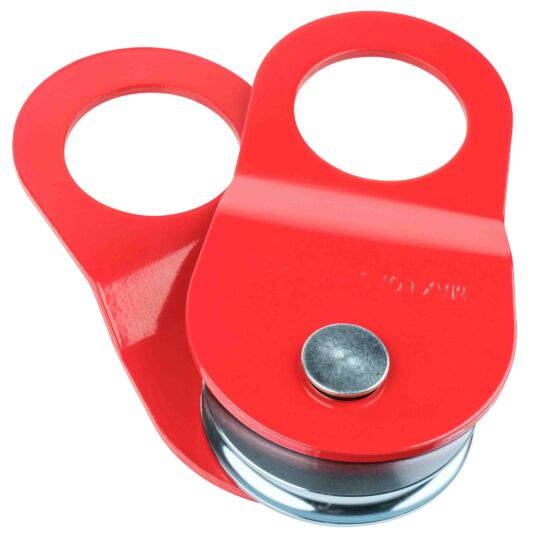
A winch snatch block is a robust pulley housed within a protective frame, designed to redirect winch cables and multiply pulling force.
Its importance in winching operations cannot be overstated, as it enhances safety, efficiency, and the overall capabilities of a winch system.
Understanding the Basics of a Winch Snatch Block
Components of a Snatch Block
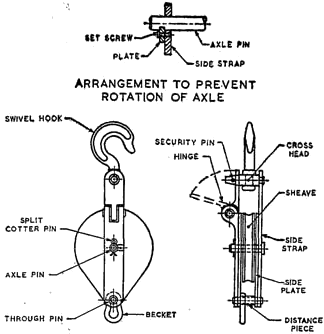
A best winch snatch block consist of several key components.:
Sheave (Pulley)
The sheave is the rotating wheel around which the winch cable runs. It reduces friction and allows the cable to move smoothly.
Side Plates
Side plates encase the sheave, providing structure and support. They help maintain the alignment of the cable as it passes through the sheave.
Pin or Bolt
The pin or bolt holds the side plates together and acts as the axle for the sheave. It must be strong enough to handle the high loads exerted during winching.
Grease Fittings
Grease fittings ensure the sheave rotates smoothly by allowing for regular lubrication. This helps in reducing wear and tear on the snatch block.
Regular lubrication prevents wear and ensures smooth winching operations.
Materials Used in Snatch Block Construction
Snatch blocks are made from various materials, each offering different levels of strength and durability:
Aluminum
Lightweight and resistant to corrosion, aluminum snatch blocks are ideal for recreational use and situations where portability is important.
Steel
Steel snatch blocks are stronger and more durable than aluminum ones but are heavier and more prone to rust if not maintained properly.
Synthetic Materials
Some modern snatch blocks use synthetic materials like high-strength plastics or composites. These materials offer a good balance of strength, weight, and corrosion resistance.
How a Winch Snatch Block Works
Principle of Mechanical Advantage
Doubling Line Pull Force
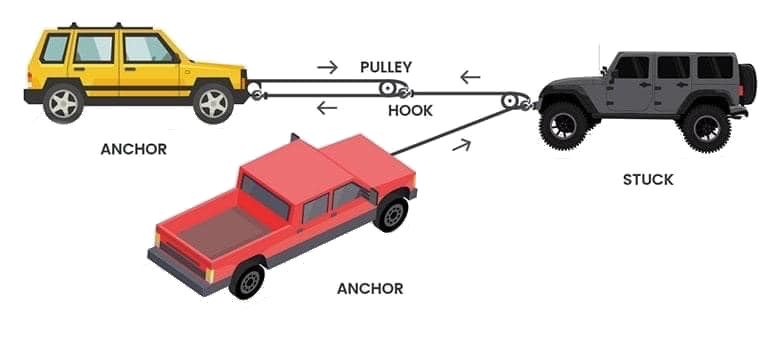
The core function of a snatch block is to provide a mechanical advantage, which effectively doubles the pulling power of your winch.
Double-Line Pull Process:
- Attach the Snatch Block: Secure the snatch block to a stable anchor point.
- Run the Cable: Pull the winch cable through the snatch block’s sheave.
- Redirect the Cable: Loop the cable back to the vehicle or load you want to pull.
- Begin Winching: Engage the winch to utilize the mechanical advantage.
This setup creates a two-to-one mechanical advantage, meaning the force applied by the winch is doubled.
Example:
- If your winch has a pulling power of 5,000 pounds, using a snatch block can increase this capacity to 10,000 pounds.
This enhanced pulling power is incredibly useful when dealing with heavy loads, allowing you to move objects that would otherwise be beyond the winch’s capacity.
Using effective cable redirection methods evenly distributes force, improving the efficiency and lifespan of the winch system.
Reducing Load on the Winch Motor
Another significant benefit of using a snatch block is that it reduces the strain on the winch motor.
When the winch cable is doubled back through the snatch block, the load is distributed more evenly.
This means that the motor doesn’t have to work as hard to pull the same load, reducing the risk of overheating and mechanical failure.
In essence, the snatch block allows the winch to operate more efficiently and last longer, as the reduced strain helps prevent wear and tear on the motor and other components.
Redirecting Winch Cable Angle
Improving Pulling Efficiency
A snatch block also enables you to change the direction of the pull, which can significantly improve pulling efficiency.
Imagine you’re trying to winch a vehicle out of a ditch, but the straight line from the winch to the vehicle is blocked by a tree.
Attach the snatch block to the tree. Run the cable through the snatch block to redirect the pull around the obstacle.
This flexibility allows you to use the winch in situations where a straight pull is not possible, making it easier to navigate obstacles or achieve an effective line of pull.
This method of cable redirection not only enhances winch efficiency but also improves dynamic load distribution, reducing the risk of cable failure.
Avoiding Cable Damage
Redirecting the cable angle with a snatch block also helps in preventing cable damage.
When a winch cable is pulled at an awkward angle or over a sharp edge, it can cause kinks, bends, or even breaks in the cable.
By using a snatch block, you can avoid these sharp bends and ensure that the cable follows a smoother path.
This reduces the risk of damage, extending the life of the cable and ensuring safer winching operations.
Additionally, maintaining a smooth cable path helps in distributing the load more evenly, further enhancing the efficiency and safety of the winching process.
Types of Winch Snatch Blocks
Single Sheave Blocks
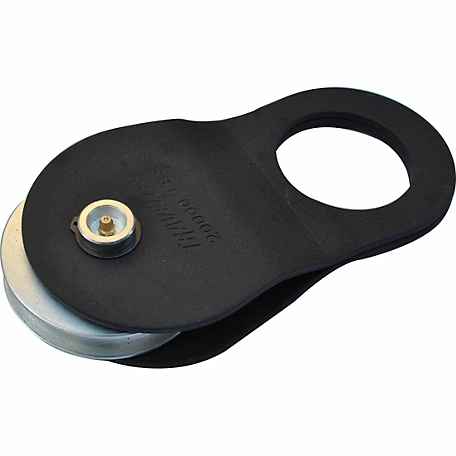
Single sheave blocks are the most common type, featuring a single rotating sheave. They are versatile and suitable for most winching tasks.
Double Sheave Blocks
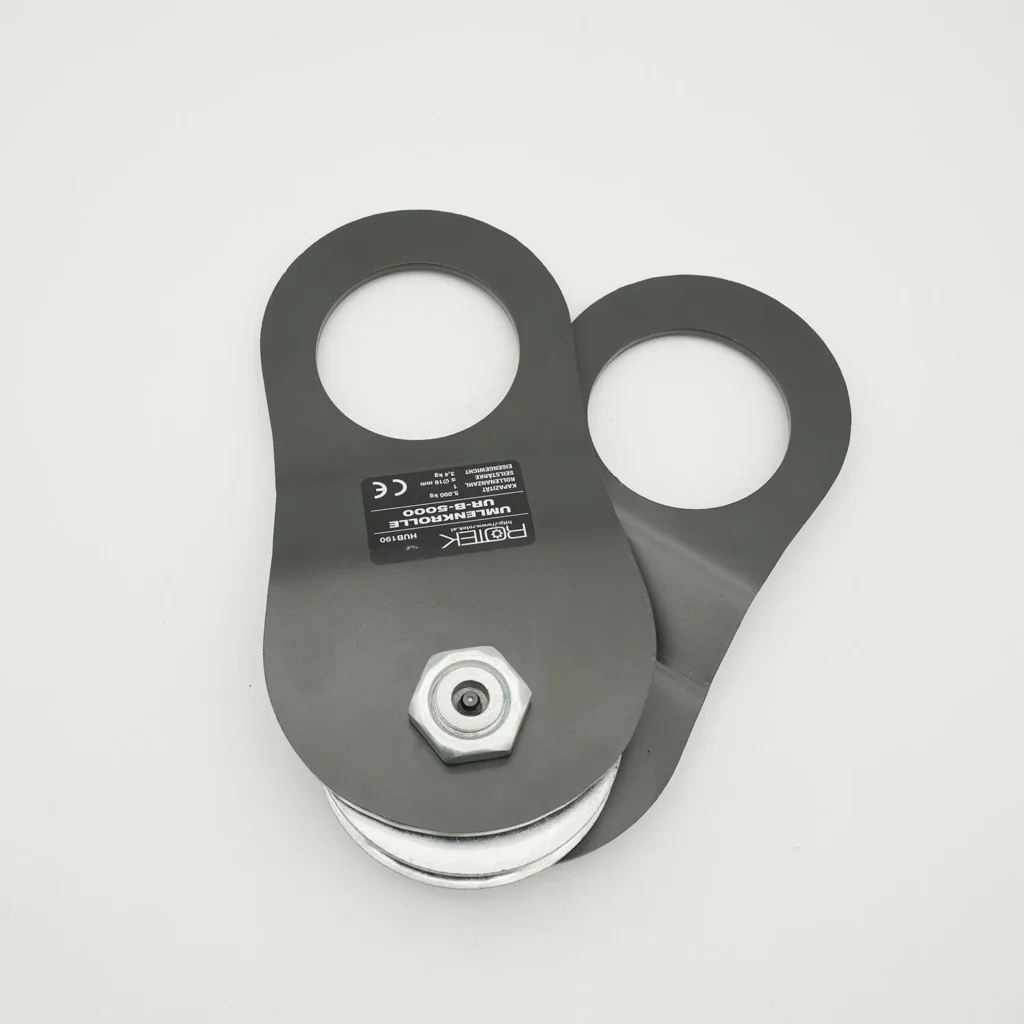
Double sheave blocks have two sheaves, allowing for even greater mechanical advantage and load distribution. These are used for particularly heavy or complex pulls.
Heavy-Duty vs. Lightweight Blocks
Heavy-duty snatch blocks are designed for extreme loads and rugged conditions, while lightweight blocks are more portable and easier to handle for everyday use.
When selecting towing equipment, understanding the balance between weight, durability, and performance helps optimize your winching efficiency.
Fixed vs. Swivel Sheave Designs
Fixed sheave snatch blocks have a static sheave, while swivel sheave blocks allow the sheave to rotate freely, providing more flexibility in the angle of pull.
Benefits of Using a Winch Snatch Block
Increased Pulling Power
The primary benefit of a snatch block is the significant increase in pulling power, allowing you to tackle more challenging recoveries.
Extended Winch Cable Life
By reducing the strain on the cable and preventing damage, a snatch block can help extend the life of your winch cable.
Safer Winching Operations
Using a snatch block can make winching operations safer by distributing the load more evenly and reducing the risk of equipment failure.
Incorporating proper recovery gear safety practices ensures the longevity of your winching equipment and reduces the likelihood of accidents.
Versatility in Challenging Terrains
Whether you’re dealing with steep inclines, muddy ground, or dense forests, a snatch block can provide the extra leverage needed to get your vehicle out of tough spots.
Snatch Block Safety Tips
- Inspect for Damage: Always inspect the snatch block for cracks, wear, or damage before each use.
- Check Load Limits: Ensure the snatch block’s working load limit (WLL) matches your winching needs.
- Stay Clear of the Cable Path: Keep hands and body parts away from the cable path during winching.
- Wear Protective Gear: Use appropriate gloves and eye protection to avoid injury.
- Avoid Overloading: Never exceed the rated capacity of your snatch block or winch to prevent failure.
Real-Life Applications
Steep Hill Climbs
When faced with a steep hill, a snatch block can double your winch’s pulling power, making it easier to ascend or descend safely.
Mud and Sand Recoveries
In soft, slippery conditions like mud and sand, a snatch block can provide the additional traction needed to free your vehicle.
Navigating Dense Forests
A snatch block can help maneuver around trees and other obstacles, providing more flexibility in winching angles.
Emergency Rescue Situations
In emergency scenarios, such as vehicle recoveries or rescues, a snatch block can be a crucial tool, providing the necessary pulling power and flexibility to safely complete the task.
Following rigging safety guidelines during these operations can prevent mishaps and ensure a successful recovery.
Does a Single Snatch Block Double Winch Pulling Power
Yes, a single snatch block can effectively double the winch’s pulling power. Here’s how it works:
1. Pulley Mechanics
A snatch block is essentially a pulley with a side plate that opens to allow the rope to be placed into it easily. When you set up a snatch block in a winching operation, you run the winch cable through the snatch block and then back to the load or an anchor point. This creates a loop with the winch cable.
2. Mechanical Advantage
The mechanical advantage of using a snatch block comes from the way it distributes the load between the sections of the cable. Here’s how it works in more detail:
Single Line Pull: In a basic setup without a snatch block, the winch cable runs directly from the winch to the load. The winch has to exert a force equal to the full weight of the load.
For example, if the load weighs 4,000 pounds, the winch must pull with a force of 4,000 pounds.
Double Line Pull (Using a Snatch Block): When you incorporate a snatch block into the setup, the cable runs from the winch to the snatch block, then back to the load or an anchor point.
This effectively splits the load across two sections of the cable. Each section of the cable now only has to support half of the load’s weight.
Example:
Imagine you have a winch with a pulling capacity of 5,000 pounds and you need to move a load that weighs 5,000 pounds. By using a snatch block, you create a setup where:
- The cable runs from the winch to the snatch block and back to an anchor point.
- The weight of the load (5,000 pounds) is divided between the two sections of the cable.
- Each section of the cable supports 2,500 pounds.
- The winch, therefore, only needs to exert 2,500 pounds of force on each section of the cable, effectively reducing the load on the winch.
3. Practical Application
- Doubling Pulling Power: With the snatch block setup, the winch’s pulling power is effectively doubled, enabling a 5,000-pound winch to handle up to 10,000 pounds.
- Reducing Strain on the Winch: By halving the force the winch needs to exert, the snatch block reduces the strain on the winch’s motor and mechanical components. This can help prevent overheating, mechanical failures, and extend the lifespan of the winch.
- Versatility in Use: Besides increasing pulling power, a snatch block allows for more flexibility in winching operations. It can change the direction of pull, making it easier to navigate obstacles or achieve a more advantageous pulling angle.
Does a Snatch Block Reduce Load on the Winch
Yes, a snatch block can reduce the load on the winch. Here’s how it works:
1. Mechanical Advantage
A snatch block creates a mechanical advantage by redistributing the weight of the load across different sections of the winch cable. Here’s a detailed step-by-step explanation:
- Direct Pull: Without a snatch block, the winch cable runs directly from the winch drum to the load. The winch has to pull the full weight of the load. If the load is 4,000 pounds, the winch exerts 4,000 pounds of force.
- Snatch Block Setup: When you introduce a snatch block into the system, you run the cable from the winch to the snatch block, and then back to either the load or an anchor point. This creates a loop, effectively distributing the load.
2. Halving the Load
In the snatch block setup, the load is shared between two sections of the winch cable. Let’s visualize this:
- Cable Path: The cable leaves the winch, goes through the snatch block, and returns to an anchor point or the load. This forms two lengths of cable between the snatch block and the anchor/load.
- Force Distribution: The load’s weight is now distributed between these two sections of cable. If you are pulling a 4,000-pound load:
- Each section of the cable carries half the load’s weight.
- This means each section supports 2,000 pounds.
- Therefore, the winch only needs to exert 2,000 pounds of force on each section.
3. Reduced Strain
By halving the load, the strain on the winch is significantly reduced. This has several benefits:
- Decreased Motor Load: The winch motor doesn’t have to work as hard since it’s pulling less weight. This reduces the risk of overheating and mechanical failure.
- Extended Equipment Lifespan: Less strain on the winch components (motor, gears, cable) means they are less likely to wear out quickly, thus extending the life of the winch.
- Increased Safety: With reduced strain, the likelihood of equipment failure is lower, enhancing the overall safety of winching operations.
Using effective cable redirection methods evenly distributes force, improving the efficiency and lifespan of the winch system.
Practical Example
Let’s consider an example with numbers to solidify the concept:
- You need to move a 4,000-pound log.
- Without a snatch block, the winch must pull with 4,000 pounds of force.
- With a snatch block:
- The cable runs from the winch to the snatch block, then back to the load.
- The 4,000-pound load is split between the two cable sections.
- Each section now only carries 2,000 pounds.
- The winch exerts 2,000 pounds of force on each section, effectively halving the required effort.
Visualization
Imagine the cable is a rope and the snatch block is a pulley. By looping the rope through the pulley and pulling both ends, the effort needed to lift the weight is reduced by half. This is the same principle applied to winching with a snatch block.
FAQs
What is a snatch block used for?
A snatch block is used to increase the pulling power of a winch and to redirect the cable’s direction during vehicle recovery or heavy-load pulling operations.
How does a snatch block double winch power?
By running the winch cable through the snatch block and looping it back to the load, you create a mechanical advantage that effectively doubles the winch’s pulling capacity.
When should I use a snatch block?
Use a snatch block when you need to:
Increase the pulling power of your winch.
Change the direction of a winch cable.
Reduce the strain on the winch motor during heavy pulls.
What is the working load limit (WLL) of a snatch block?
The working load limit (WLL) is the maximum load a snatch block can handle safely. Always check the manufacturer’s specifications and ensure the WLL matches your winching needs.
Can a snatch block damage a winch cable?
No, when used properly, a snatch block helps prevent cable damage by reducing sharp angles and distributing the load evenly. Regular inspection and maintenance are essential for safety.
How do I maintain a snatch block?
To maintain a snatch block:
Regularly lubricate the sheave with grease fittings.
Inspect for cracks, wear, or damage before each use.
Ensure the side plates and pins are secure.
What’s the difference between a snatch block and a pulley block?
A snatch block is a type of pulley block specifically designed to open and allow easy insertion of the cable, making it ideal for winching and recovery operations.
Is it safe to use a snatch block with synthetic winch ropes?
Yes, but ensure the snatch block is compatible with synthetic ropes and check for sharp edges that could damage the rope.
How do I set up a double-line pull using a snatch block?
Attach the snatch block to an anchor point.
Run the winch cable through the snatch block.
Loop the cable back to the vehicle or load.
Begin winching to leverage the mechanical advantage.
Conclusion
A winch snatch block is an indispensable tool for anyone who regularly uses a winch. By understanding its components, how it works, and the various types available, you can make the most of this powerful device.
Whether you’re off-roading, working in emergency rescue, or just need a bit of extra muscle, a winch snatch block can make your winching operations more efficient, safer, and more effective.

